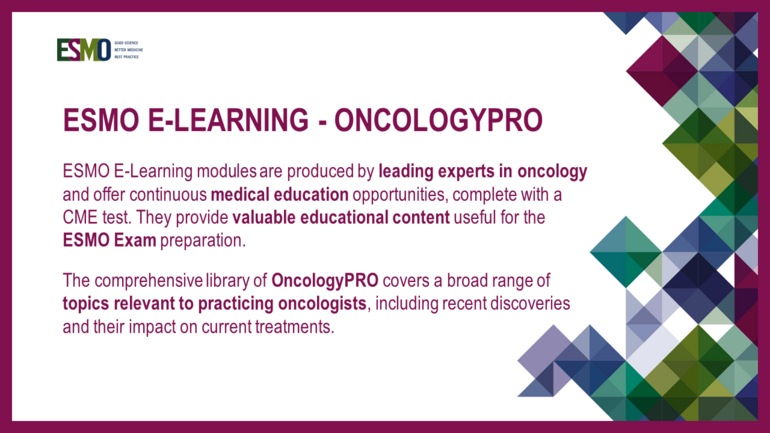In this E-Learning module on Chronic Lymphocytic Leukaemia (CLL), the author outlines diagnosis, differential diagnosis and counselling about the expected survival, treatment indications based on staging and disease activity. Furthermore, he provides the recommendations for first-line treatment and management of relapse in different populations of patients with CLL.
In the first part of the module, the author reviews the WHO 2016 classification criteria for CLL. This part is followed by differential diagnosis based on morphology, as well as on flow cytometry. The case scenarios, when bone marrow evaluation is indicated, are presented.
Indications are given on how to calculate the CLL International Prognostic Index, as well as on CLL staging, that is based on a physical examination and standard laboratory tests. Clues of disease activity and a summary of IWCLL Guidelines criteria for treatment are provided.
In terms of first-line treatment, the author reviews the treatments in physically fit and unfit patients lacking 17p deletion and TP53 mutation. He also provides perspective based on evidence from the clinical studies comparing ibrutinib vs. chemoimmunotherapy. The treatments safety profile, as well as the potential benefit from treatment based on TP53 disruption and/or IGHV mutation status, are summarised.
In the next part of the module, the author underlines that there is no benefit from repeating chemoimmunotherapy in case of TP53 disruption or early relapse. Ibrutinib, idelalisib plus rituximab and venetoclax continuous therapy are effective in relapsed CLL not suitable for chemoimmunotherapy because of early relapse or 17p deletion. The author illustrates the findings from clinical studies before providing updated algorithms for salvage treatment.
The last part of the module is dedicated to the differential diagnosis between CLL progression and Richter transformation, as well as to the recommendations for the management of Richter syndrome.


